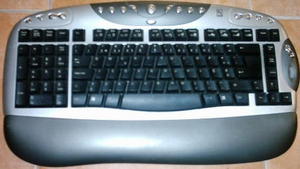With the growing trend of mothers wanting to stay at home with their children, but still have the security of being able to work, there is a growing interest in the Medical Transcription field. Many people are curious as to what a medical transcriptionist really does, and others attempt to enter the field and realize that it is not as easy as they thought. I have been asked over the years many times by people wondering what I really do. Others assume that a medical transcriptionist just types information, this is not the case. If you are wondering what a medical transcriptionist does, here it is.
A medical transcriptionist is a medical language specialist. They must know medical terminology, be able to break down medical words, know the human anatomy including muscles, ligaments, and nerves. They must also be able to interpret medical data. It is very important for a medical transcriptionist to be aware of normal laboratory values and typical healthy ranges for blood and urine tests. They must also be familiar with diagnosis and procedural data and the steps involved in the procedure. They must also have an advanced knowledge of the English language and grammar rules.
Medical transcriptionists must be able to maneuver through a computer with ease and be able to make minor repairs on their hardware and software, especially if they work from home. They must be able to install and remove software on their own and be able learn new computer programs often.
A medical transcriptionist listens to dictation (audio recording of a physician note) and type the given data. They must then edit and correct any grammar and punctuation marks they have made. Additionally, they must review all laboratory data contained in the document for error. Not often, but on occasion a physician may make errors when dictating laboratory data. If a physician dictates the laboratory data in a fashion that is not typical or if the laboratory data is not within normal limits and it is not stated that this is abnormal, the document must be flagged for review by the physician. After information is corrected by the physician, the transcriptionist proof reads the document and places it in the patient chart or files it in the proper section of the electronic medical record.
The medical world is constantly changing; you must keep up with the necessary continuing education credits every three years. Also, many employers request that you be a member of an association that offers credentials such as Registered Medical Transcriptionist or Certified Medical Transcriptionist. When carrying these credentials, your employer knows that you are going to remain up to date with all continuing education credits, and that you have information on the changes to medical transcription as a whole.
Medical transcription can be a very rewarding career, especially if you enjoy a constantly changing job. Once you finish one file, the next file is completely different. It is very important that you choose the proper training to become a medical transcriptionist. For more on this, view the article listed in the recommended reading section of this article. It contains a wealth of information on choosing the right training to become a medical transcriptionist.
Recommended Reading
What is the Best Way to Become a Medical Transcriptionist?
Managing Home, Work, and College
How to Maximize Your Learning Potential with an Online College
How to Choose an Online College




